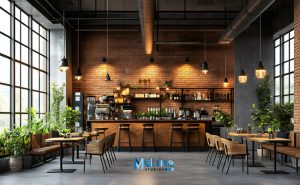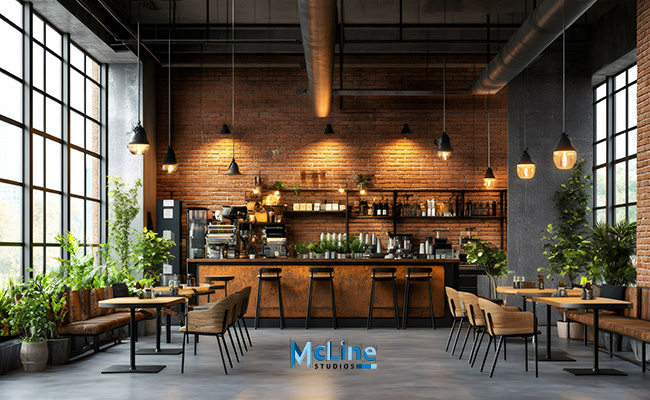 That’s why interior shop drawings play such a vital role in every project.
That’s why interior shop drawings play such a vital role in every project.
Interior shop drawings translate creative concepts into highly detailed technical plans that guide fabricators, installers, and contractors. They act as a bridge between design and execution, ensuring every element—down to the last joint, edge, and fixture—fits perfectly on-site. When created with precision, these drawings prevent errors long before construction begins, saving both time and cost while preserving design integrity.
In this article, we’ll explore why precision in interior shop drawings matters, how it helps avoid costly mistakes, and the professional practices that ensure accuracy from concept to completion
What Are Interior Shop Drawings?
Interior shop drawings are detailed technical drawings that show exactly how interior design plans will be built and installed on-site. They act as a bridge between the designer’s concept and the construction team’s work, turning creative ideas into practical, buildable details.
These drawings include precise measurements, materials, joinery details, finishes, and installation methods for every element in the interior space — such as furniture, ceilings, partitions, cabinets, flooring, and lighting layouts. Unlike design drawings that focus on how a space looks, shop drawings focus on how things are actually made and fitted.
Interior shop drawings are usually prepared by skilled draftsmen or detailers, often using CAD or BIM software. They ensure that every piece of furniture, fixture, or panel fits perfectly into the space without clashes or errors. Each drawing is checked and approved by designers, contractors, and fabricators before work begins, so everyone involved follows the same technical plan.
The main goal of shop drawings is accuracy and clarity. When done properly, they help avoid confusion on-site, reduce material waste, and prevent costly mistakes or rework. They also make coordination between different teams—like carpenters, electricians, and plumbers—much easier.
In short, interior shop drawings are the blueprint for flawless execution. They bring design ideas to life with precision, ensuring the final space looks exactly as planned and functions smoothly.
The Role of Precision in Shop Drawings
Precision is the most important part of creating interior shop drawings. It means that every line, measurement, and detail in the drawing must be exact. Even a small mistake in size or placement can lead to problems during fabrication or installation. For example, if a cabinet is drawn just one inch wider than the actual space, it may not fit, causing delays and extra costs.
Accurate shop drawings make sure that all parts of a design come together perfectly on-site. They show the correct dimensions, materials, and connections for every component. This helps designers, contractors, and fabricators work with confidence, knowing they are following the same correct information.
Precision also improves coordination between different teams. For instance, when electrical, plumbing, and carpentry work are based on precise drawings, clashes and rework can be avoided. Every element—from lighting fixtures to wall panels—fits exactly where it should.
In today’s industry, precision is supported by advanced tools like CAD and BIM software, which allow detailers to create accurate and clear drawings. Still, human review and experience remain key to maintaining high standards of accuracy.
In simple terms, precision in shop drawings is what turns design ideas into real spaces without confusion or waste. It ensures quality, saves time, and helps deliver a smooth, successful project from start to finish.
Common Mistakes Caused by Inaccurate Drawings
Inaccurate interior shop drawings can create many problems during construction. Even small errors in measurements, materials, or details can lead to delays, extra costs, and frustration for both designers and clients.
One common mistake is incorrect dimensions. For example, if a cabinet, shelf, or piece of furniture is drawn slightly too big or too small, it may not fit in the space. Fixing these errors can waste materials and increase labor costs.
Another frequent problem is misaligned elements. Lighting fixtures, electrical points, or plumbing connections may not match the layout if the drawings are not precise. This can cause clashes between different teams, like electricians, plumbers, and carpenters, making installation more difficult.
Wrong material specifications are also common. If the drawings list the wrong type of wood, laminate, or finish, the final product may not match the design vision. Correcting this mistake can take extra time and money.
Sometimes drawings are unclear or incomplete. Missing details, unclear labels, or lack of scale can confuse workers on-site, leading to errors in installation.
All of these mistakes affect not just the budget and timeline but also the quality and appearance of the final interior. Clients may be unhappy, and contractors may face unnecessary stress.
How Precision in Shop Drawings Prevents These Mistakes
Inaccurate interior shop drawings can create many problems during construction. Even small errors in measurements, materials, or details can lead to delays, extra costs, and frustration for both designers and clients.
One common mistake is incorrect dimensions. For example, if a cabinet, shelf, or piece of furniture is drawn slightly too big or too small, it may not fit in the space. Fixing these errors can waste materials and increase labor costs.
Another frequent problem is misaligned elements. Lighting fixtures, electrical points, or plumbing connections may not match the layout if the drawings are not precise. This can cause clashes between different teams, like electricians, plumbers, and carpenters, making installation more difficult.
Wrong material specifications are also common. If the drawings list the wrong type of wood, laminate, or finish, the final product may not match the design vision. Correcting this mistake can take extra time and money.
Sometimes drawings are unclear or incomplete. Missing details, unclear labels, or lack of scale can confuse workers on-site, leading to errors in installation.
All of these mistakes affect not just the budget and timeline but also the quality and appearance of the final interior. Clients may be unhappy, and contractors may face unnecessary stress.
The End Note
Precision in interior shop drawings is not just a technical requirement—it is the foundation of a successful interior project. Accurate and detailed drawings ensure that every element, from cabinets and furniture to lighting and finishes, fits perfectly in the space. They help avoid costly mistakes, reduce material waste, and prevent delays, keeping both clients and contractors satisfied.
By focusing on precision, designers and fabricators can improve coordination between different teams, ensuring smooth installation and high-quality results. Advanced tools like CAD and BIM make it easier to achieve accuracy, but careful human review and attention to detail remain essential.
In short, interior shop drawings bridge the gap between design and execution. When created with care and precision, they turn creative concepts into flawless real-world spaces. Investing in accurate shop drawings saves time, money, and stress, while ensuring that the final interior looks exactly as envisioned.
For any interior project, precision is not optional—it is the key to delivering beautiful, functional, and error-free spaces.
 :
https://jp.pinterest.com/mclinestudios/
:
https://jp.pinterest.com/mclinestudios/












